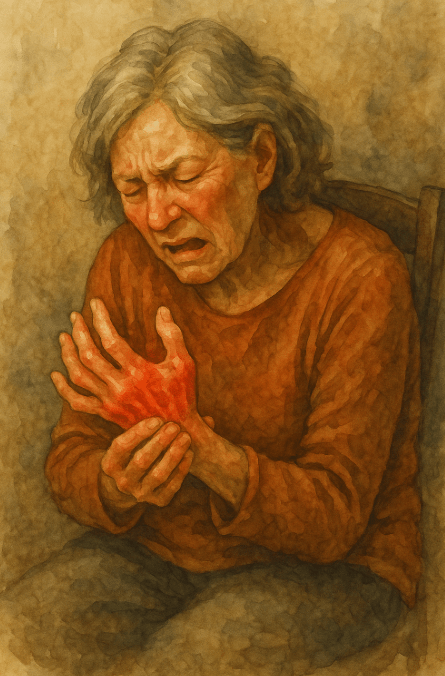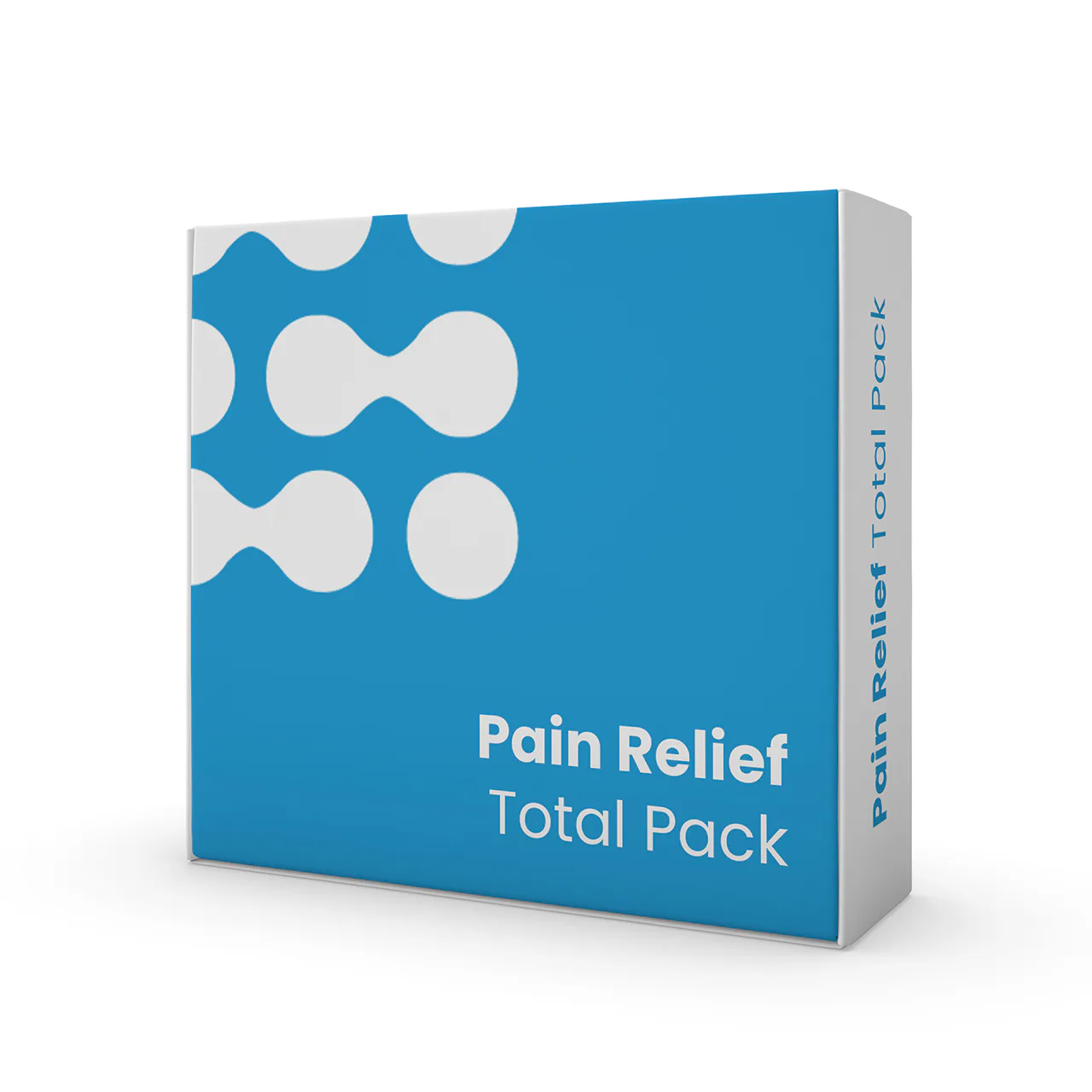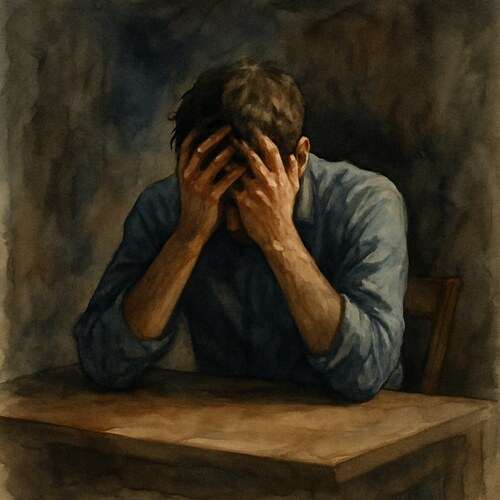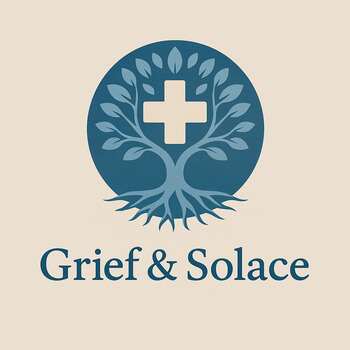Grieving Rheumatoid Arthritis: When the Body Turns Against Itself
Grief with rheumatoid arthritis lives in every swollen joint and missed step, watching strength crumble under pain that refuses to loosen its grip.

This post blends real grief with grounded knowledge. It isn’t clinical. It isn’t distant. It’s meant to sit beside you—not above you. The story you’ll read is meant to reflect what so many feel when living through or witnessing this condition: confusion, exhaustion, and quiet forms of courage.
If what you read feels familiar, please speak with your doctor. Your pain deserves more than silence.
She Fought Through Smiles Until Her Hands Couldn’t Hold Hope
She once did everything with her hands. Braided hair before school, made pies without a recipe, and held her grandkids against her chest as if their warmth could ward off time itself. Her hands told stories, worked tirelessly, comforted those around her, and created countless memories.
Then came that morning when she couldn’t turn the doorknob. Just a twist…a small, simple motion…and it felt like her fingers had turned to rust. The doctor diagnosed her with Rheumatoid Arthritis, an autoimmune betrayal where her own body mistook its joints for an enemy. They showed her diagrams and inflammation charts, discussed flares and long-term damage. She nodded, trying to understand, but the only word that truly resonated was forever.
🧠 Symptoms:
– Painful, swollen, warm joints, often symmetrical (both sides)
– Morning stiffness lasting over 45 minutes
– Fatigue, fever, loss of appetite
– Affects small joints initially (hands, feet), then wrists, elbows, hips, knees, ankles
– Possible involvement of skin, eyes, lungs, heart, blood vessels, nerves
– Flare-ups with periods of remission
– Long-term inflammation can cause joint deformity and limited movement
At first, the pain wasn’t constant. It came and went like a storm that offered no warning. One day, she could chop vegetables; the next, she struggled to hold a fork. She masked it well, smiling through the discomfort. When she dropped things, she would laugh and say, “I’m just getting old,” as if age could somehow explain such a profound betrayal.
But I noticed. I saw the way she gazed at her own hands as if they belonged to someone else. I noticed the hesitation before every movement, as she calculated the cost of even the smallest attempt. Flares stole her sleep, leaving her with swollen knuckles, wrists that locked, and joints so inflamed they felt like fire beneath her skin.
Despite it all, she pressed on. She tried every medication, endured injections that bruised her pride as much as her skin, and learned to open jars with her elbows. She held her grief in silence, unwilling to make others uncomfortable. Where she had once been a caregiver, she now needed one, and that was the heartbreak she never wished to acknowledge.
Complications:
– Joint deformity and disability
– Osteoporosis (from inflammation or meds)
– Rheumatoid nodules (under skin/organs)
– Secondary Sjögren’s syndrome (dry eyes/mouth)
– Carpal tunnel syndrome
– Increased infection risk (due to immune suppression)
– Heart/lung inflammation (pericarditis, interstitial lung disease)
– Elevated lymphoma risk
Causes:
– Autoimmune process attacking the synovium (joint lining)
– Likely genetic and environmental factors (e.g., infections, smoking)
– Hormonal influences may play a role
But still, she adapted. She modified the kitchen, installed voice-to-text on her phone, and realized that asking for help didn’t signify weakness; it was a means of survival. Some days, she wept because she couldn’t lift a pan; other days, she laughed at her ingenuity in buttoning a shirt with just two fingers and a spoon handle.
Though she never regained her old hands, she discovered something greater: a will that refused to rust and a resilience that roared louder than the pain. She may not hold hope in the same manner anymore, but she embodies it…in every adapted moment, in every breath that defies surrender.
Risk Factors:
– Female gender
– Middle age (though can occur at any age)
– Family history of autoimmune diseases
– Smoking
– Periodontal disease
– Overweight
Her joints may have locked, but her spirit remained unyielding. Even when her hands let go, she held the line, steady and gentle.
📘 Diagnosis & Treatment
**Diagnosis**
– Physical exam: tender, swollen, warm joints, deformities
– Blood tests: elevated CRP, ESR, RF, anti-CCP antibodies
– Imaging: X-rays, ultrasound, MRI to evaluate joint damage and activity
**Treatment**
*Medications:*
– NSAIDs (ibuprofen, naproxen) for pain/inflammation
– Corticosteroids (short-term relief)
– DMARDs: methotrexate, leflunomide, hydroxychloroquine, sulfasalazine
– Biologic DMARDs: adalimumab, etanercept, infliximab, rituximab, tocilizumab
– Targeted synthetic DMARDs: tofacitinib, baricitinib, upadacitinib
– Caution: infection risk, monitoring blood counts and liver function
*Therapies:*
– Physical and occupational therapy to preserve joint function
– Assistive devices for joint protection and daily tasks
– Surgery: joint replacement, tendon repair, fusion for severe damage
**Lifestyle & Self-Care**
– Regular gentle exercise (walking, tai chi)
– Heat/cold for pain relief
– Stress management techniques
– Quit smoking
– Maintain healthy weight
**Complementary Therapies**
– Fish oil supplements (anti-inflammatory)
– Tai chi (improves mood/mobility)
– Consult providers before adding supplements or alternative treatments
**Living With It**
RA isn’t just joint pain—it gradually erodes your independence. It’s watching your hands struggle to button shirts, feeling the ache when you try to walk, or experiencing flare-ups that interrupt your plans. Many see only the invisible pain, the stiffness, the fatigue—yet, inside, you adapt. You find new ways to love the small victories: holding loved ones, caring for yourself, reclaiming moments of control. Through therapy, medication, and resilience, you learn that even in pain, there is strength—quiet, persistent, yours.
I know this is heavy, and I understand that the road ahead may feel like a tangle of loss and unanswered questions. But please hear this: you are not broken because you are hurting; you are not weak because you are afraid. You are living through something real, and survival itself is a kind of grace. You are allowed to struggle, you are allowed to hope, and you are allowed to not have all the answers today. Whatever comes next, you do not face it empty-handed; you carry every moment of love that shaped you, and that will always be enough to keep going.
🎀 Gifts to help With Rheumatoid Arthritis
🏥 Everyday Comforts for Everyday Battles
Managing Rheumatoid Arthritis often means needing a little extra help.
Sometimes it’s about restoring dignity, ease, or simply getting through the day with less pain.
These carefully chosen tools aren’t just items; they’re small bridges back to living.
This section is about finding practical support, never shame.
Compression Gloves for RA – Support for Hands That Start Stiff and End in Fire
Rheumatoid arthritis often begins in the hands—painful swelling, stiffness, and joints that stop obeying. These compression gloves offer light pressure to reduce inflammation and improve circulation without restricting movement. Soft enough to wear during sleep, strong enough to support during the day. Because even holding a cup shouldn’t hurt this much.
🌿 Paths to Healing Beyond the Map
Sometimes traditional medicine isn’t enough.
If you’re exploring gentle, alternative options to help with Rheumatoid Arthritis,
you might find comfort in plant-based compounds like **CBD or CBG**.
*This section is not medical advice, just a door left open.*
USA Medical Pain Relief Total Pack – Calm for the Joints That Always Wake Up Angry
RA is more than joint pain—it’s immune dysfunction, chronic inflammation, and mental exhaustion from the daily burn. This Total Pack blends CBD, anti-inflammatory botanicals, and nervous system support to help soothe the ache and lower the systemic fire. It won’t slow the disease. But it may help ease how loud it screams.
Need a Different Path Forward?
Every journey through grief looks different. Choose the next step that speaks to where you are now:
When You're Ready to Start Healing
Healing doesn’t mean forgetting.
It means finding small ways to carry your grief with strength and grace.
These are the stories, tools, and gentle steps to begin walking forward…at your own pace.
When You're Still in the Thick of It
Sometimes healing feels like a lie.
If you’re not ready to move on…if the pain still roars louder than the world wants to hear…this is the place where you’re allowed to feel it.
No sugarcoating. No pretending. Just truth.
When You're Holding on to Who’s Still Here
Grief reminds us to love louder.
If someone you love is still with you, this is your place to celebrate them, honor them, and create new memories while there’s still time.
Joy and sorrow can live side by side.






